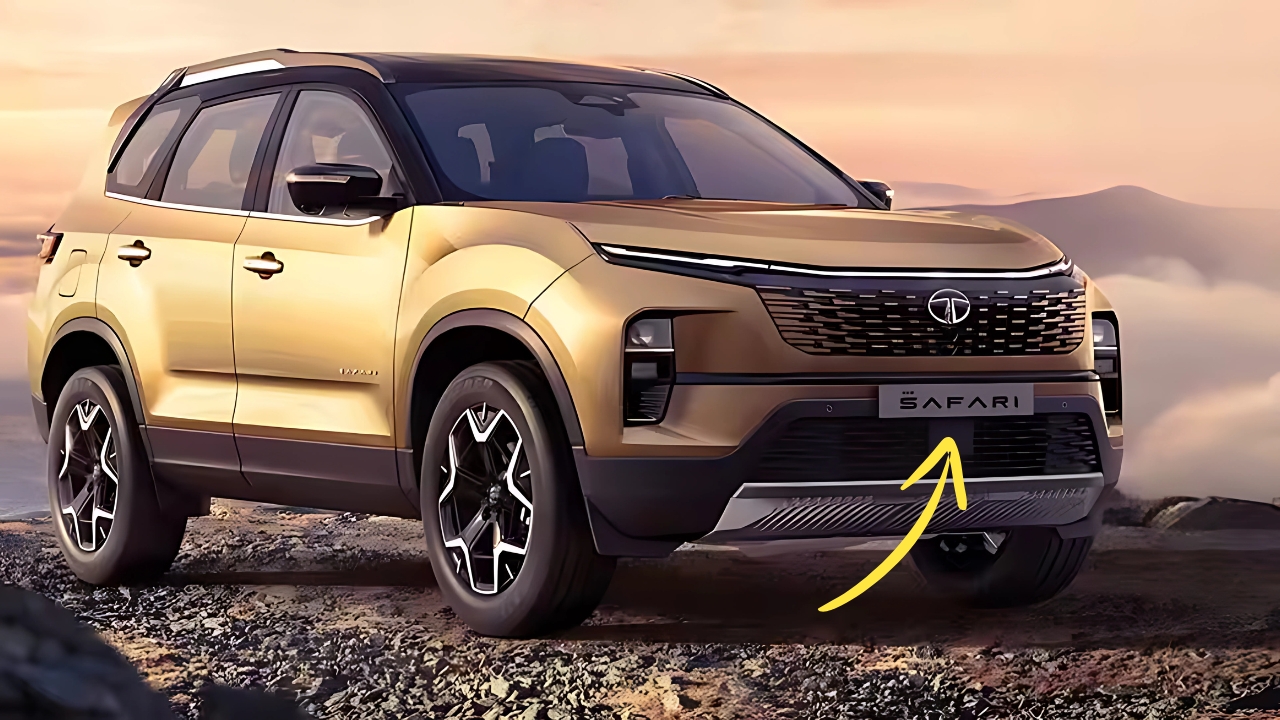Tata Safari: The Tata Safari represents one of India’s most enduring automotive nameplates, having evolved from a pioneering homegrown SUV to a sophisticated modern family vehicle over its multi-decade journey.
This evolution mirrors India’s own automotive development, transforming from a market satisfied with functional utility to one demanding world-class design, technology, and safety.
Through successive generations, the Safari has maintained its cultural significance while adapting to shifting consumer expectations and regulatory requirements.
Tata Safari: Origin and Historical Significance
Introduced in 1998, the original Tata Safari emerged as India’s first indigenously developed SUV, representing a significant milestone in the nation’s automotive manufacturing capabilities.
This first-generation model established the nameplate’s reputation for rugged capability, featuring body-on-frame construction, selectable four-wheel drive, and the elevated seating position that would become central to its identity.
Despite relatively modest mechanical sophistication by international standards, the vehicle captured the imagination of Indian consumers seeking both practical utility and status differentiation.
The Safari quickly established cultural significance beyond its sales volumes, appearing prominently in Bollywood productions and becoming associated with adventure tourism in emerging domestic destinations.
This cultural embedding created brand equity that transcended the vehicle’s objective capabilities, establishing an emotional connection that continues influencing purchase decisions through subsequent generations.
Design Evolution and Current Aesthetic
The contemporary Safari, reintroduced in 2021, represents a significant departure from its utilitarian origins.
Based on Tata’s OMEGA architecture (Optimal Modular Efficient Global Advanced Architecture) derived from Land Rover engineering, the current model embraces modern monocoque construction rather than the traditional body-on-frame approach of its predecessors.
The exterior design implements Tata’s “Impact 2.0” design language, featuring a distinctive front fascia with split headlamp arrangement, tri-arrow patterns in the lower bumper, and an upright stance that maintains visual continuity with earlier generations despite the fundamental architectural changes.
The stepped roof, another Safari signature element, has been preserved while integrating modern design elements like the floating roof effect created by blacked-out pillars.
Dimension-wise, the vehicle measures approximately 4,661mm in length, 1,894mm in width, and 1,786mm in height, with a wheelbase of 2,741mm.
These proportions deliver substantial road presence while accommodating three-row seating—a configuration increasingly valued in the Indian market as family travel patterns evolve.
The available color palette emphasizes sophisticated earth tones appropriate to the vehicle’s positioning, with options including Daytona Grey, Tropical Mist, and Pristine White, among others.
Distinctive wheel designs (18-inch alloys on higher variants) complete the visual package while providing practical benefits regarding brake cooling and structural integrity.
Interior Design and Passenger Experience
The cabin design represents the most dramatic transformation from early Safari iterations, prioritizing premium materials and contemporary design over utilitarian functionality.
The layered dashboard incorporates soft-touch materials in primary contact areas, complemented by oak wood finish trim elements in higher variants that elevate the perceived quality.
The leather-wrapped steering wheel and leatherette upholstery on appropriate trim levels further enhance the premium experience.
The seating arrangement accommodates either six or seven occupants depending on configuration, with captain’s chairs or bench seating available for the second row.
Front passengers benefit from electrically adjustable seating with memory function on select variants, while all three rows feature thoughtful ergonomic design that balances comfort with space efficiency.
The panoramic sunroof enhances spatial perception while responding to growing consumer demand for this feature in premium segments.
Ambient lighting with multiple color options creates distinctive atmosphere during nighttime driving, while the ventilated front seats address practical requirements for occupant comfort during India’s hot climate conditions.
The “Boss Mode” feature, allowing rear passengers to adjust the front passenger seat position, acknowledges the chauffeur-driven usage pattern common among premium vehicles in the Indian market.
Technology Integration
The technology package centers around a 8.8-inch floating touchscreen infotainment system featuring Apple CarPlay and Android Auto connectivity.
The interface design prioritizes legibility and straightforward operation with customizable layouts. The premium JBL audio system delivers impressive sound quality through nine speakers strategically positioned throughout the cabin.
The 7-inch digital instrument cluster provides customizable information displays, adapting to different drive modes and user preferences.
The electronic parking brake with auto-hold function represents a significant upgrade from traditional mechanical systems, enhancing both convenience and interior packaging efficiency.
Connected car technology through Tata’s iRA system offers over 80 features including remote vehicle operations, geofencing capabilities, stolen vehicle tracking, and over-the-air update functionality.
Voice recognition through natural language processing provides hands-free operation of essential features, reducing driver distraction during operation.
Advanced driver assistance systems include electronic stability program, hill hold control, hill descent control, and corner stability control—features that enhance safety while providing confidence during varied driving conditions.
The terrain response modes (Normal, Rough, and Wet) modify engine mapping, traction control parameters, and throttle response according to surface conditions, enhancing capability without requiring driver expertise.
Powertrain and Performance
The current Safari employs a 2.0-liter Kryotec turbocharged diesel engine producing 170 horsepower and 350 Nm of torque. This Fiat-derived powerplant delivers strong mid-range performance valuable for highway overtaking and fully-loaded driving conditions.
Transmission options include a 6-speed manual and 6-speed torque converter automatic, providing choices across different driving preferences.
Unlike its predecessors, the current Safari has transitioned to front-wheel drive architecture, prioritizing on-road dynamics and passenger comfort over extreme off-road capability.
This shift acknowledges the reality that most premium SUVs in India rarely venture beyond occasional unpaved roads, making dedicated four-wheel drive systems unnecessary for typical usage patterns.
The monocoque construction delivers significantly improved handling characteristics compared to earlier body-on-frame generations, with reduced body roll during cornering and superior noise isolation.
The fully independent suspension (MacPherson struts front, multi-link rear) balances ride comfort with handling precision, effectively absorbing road imperfections while maintaining stability during directional changes.
Tata Safari:
The Tata Safari’s evolution from utilitarian pioneer to sophisticated family vehicle illustrates the remarkable transformation of India’s automotive market over recent decades.
By retaining key brand attributes while embracing contemporary engineering approaches, Tata Motors has successfully repositioned this iconic nameplate to compete effectively in an increasingly competitive landscape dominated by international brands.
The current Safari balances distinctive design elements with practical functionality, delivering genuine three-row accommodation without excessive external dimensions.
The comprehensive technology integration addresses evolving consumer expectations regarding connectivity and convenience features, while the refined powertrain delivers appropriate performance for its intended usage.
As Indian consumers continue embracing SUVs across all market segments, the Safari’s combination of heritage, presence, and modern execution establishes a compelling proposition that honors its pioneering legacy while meeting contemporary standards for design, safety, and technology integration.

